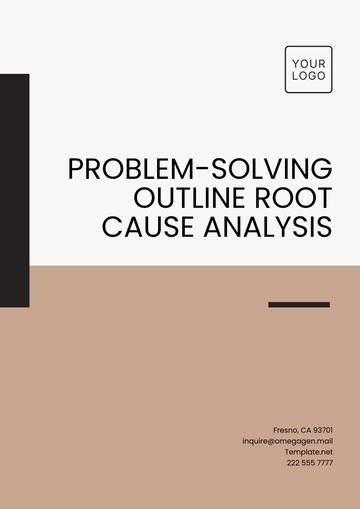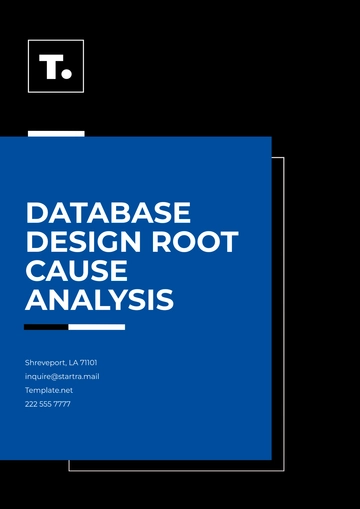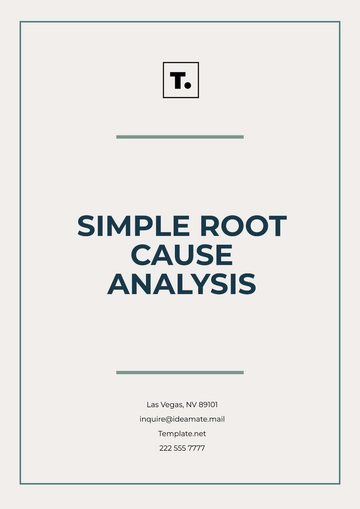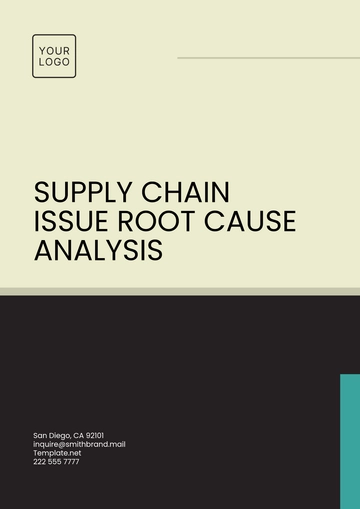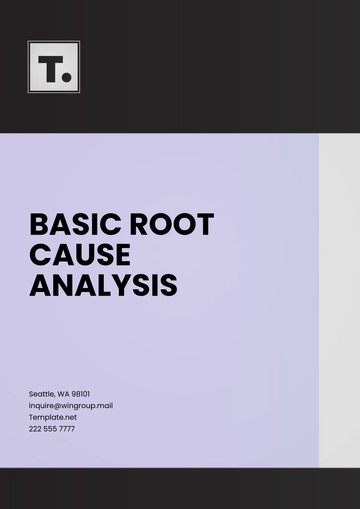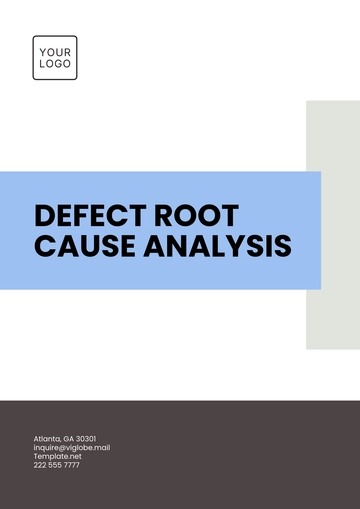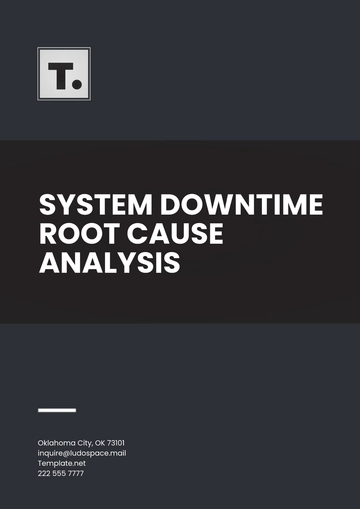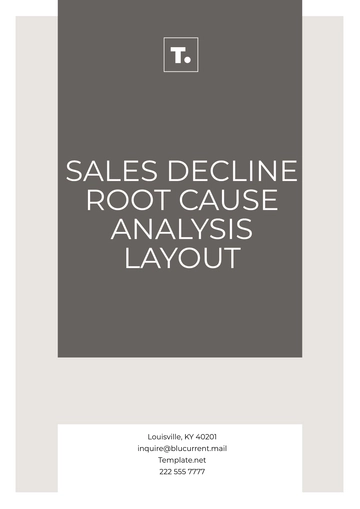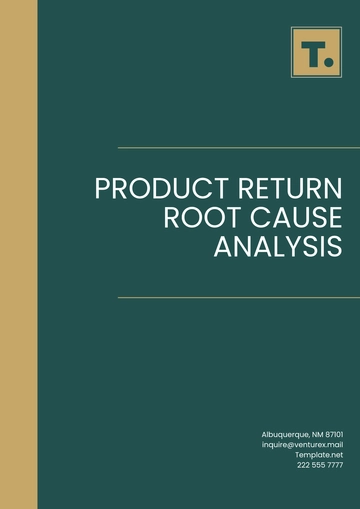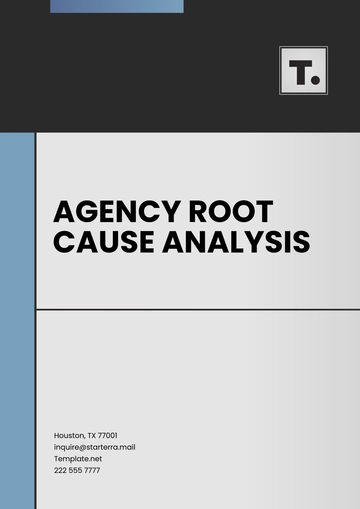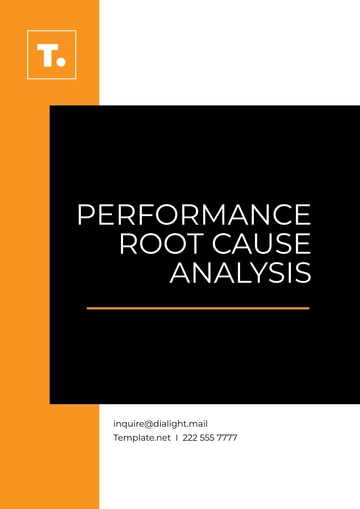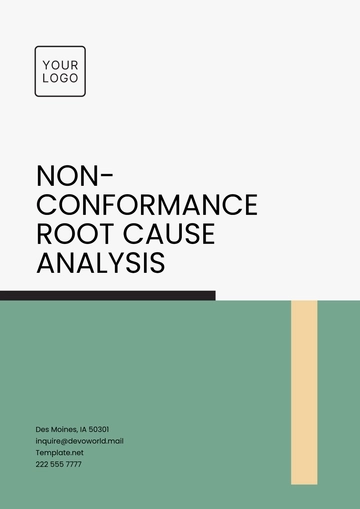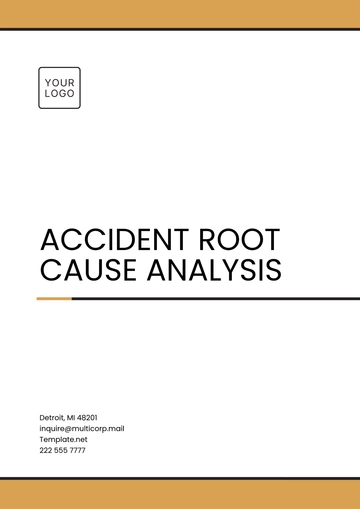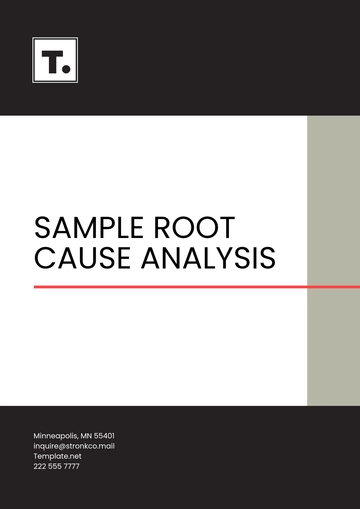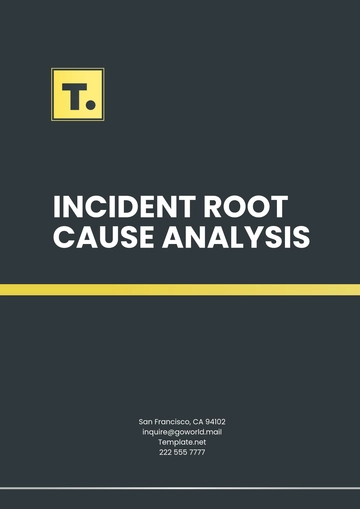Free Yearly Diversity and Inclusion Progress Analysis HR
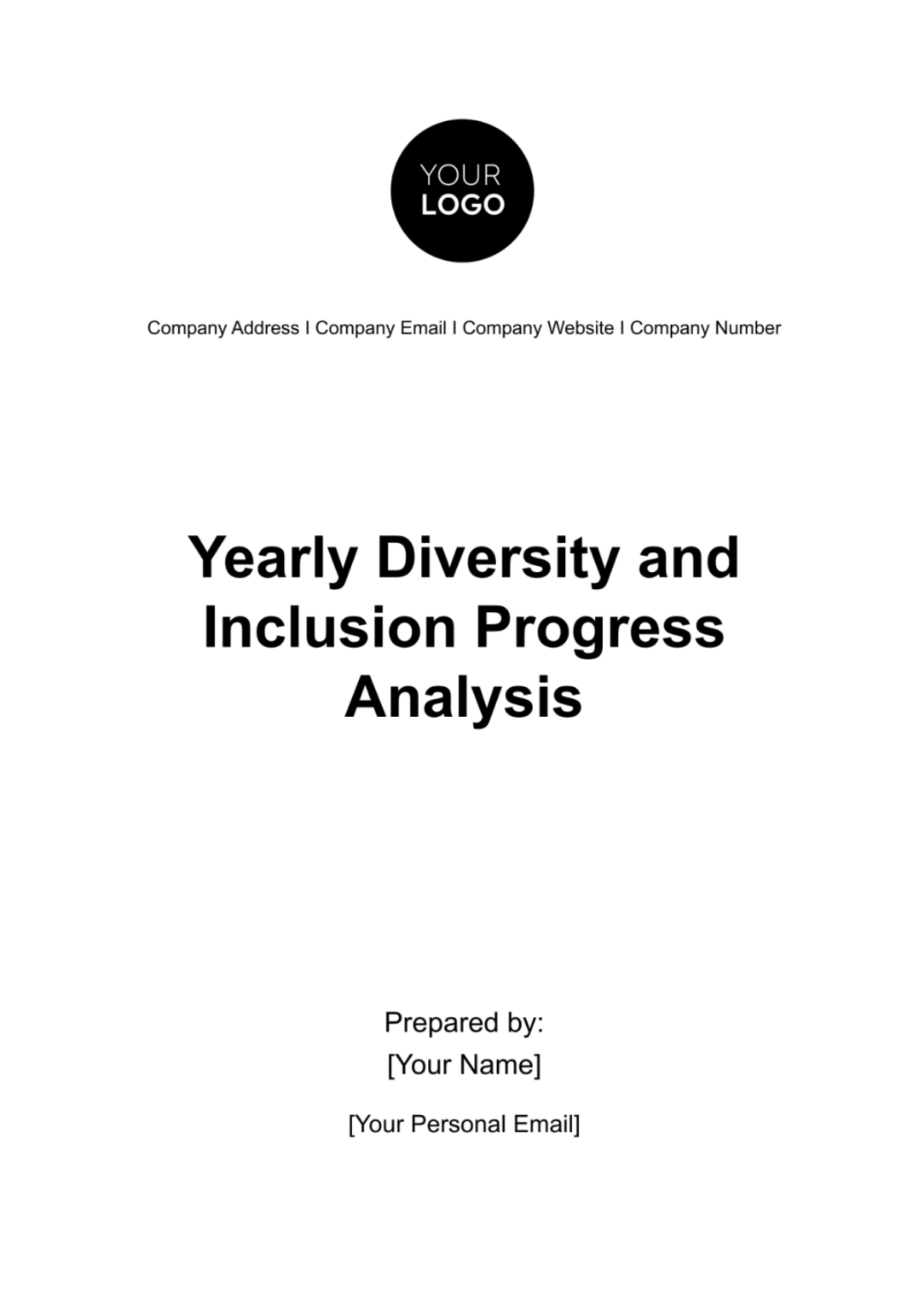
I. Introduction
As we embark on a journey of introspection and progress, the Yearly Diversity and Inclusion Progress Analysis (YDIPA) emerges as a powerful instrument that illuminates our path towards a more diverse and inclusive future within [Your Company Name]. This section provides a comprehensive introduction to YDIPA, elucidating its purpose, objectives, and the profound significance of diversity and inclusion.
A. Purpose and Objectives
The YDIPA is more than a mere report; it is a compass that guides us towards the destination of a more inclusive tomorrow. Its purpose is multi-faceted:
Gauge the Organization's Progress: YDIPA serves as a barometer of our journey, allowing us to gauge how far we've come in achieving our diversity and inclusion goals. It sheds light on the milestones we've crossed and the path ahead.
Identify Areas of Strength and Improvement: Within the intricate tapestry of our organization's culture, YDIPA weaves a pattern of strengths and opportunities. It identifies areas where we excel and others where we can sharpen our focus, fostering a culture of continuous improvement.
Provide Insights for Strategic Decision-Making: In the fast-evolving landscape of the business world, informed decisions are currency. YDIPA doesn't just provide data; it offers insights that empower our leadership to make strategic choices aligned with our diversity and inclusion objectives.
B. Significance of Diversity and Inclusion
The significance of diversity and inclusion transcends rhetoric; it's woven into the very fabric of our organization's success. The data speaks for itself:
Innovation and Performance: Research by McKinsey shows that organizations with diverse workforces are 33% more likely to outperform their non-diverse counterparts. The fusion of varied perspectives ignites innovation, driving us toward excellence.
Engagement and Retention: Gallup data reveals that companies with high employee engagement scores enjoy 21% higher profitability. A culture of inclusion fosters engagement, ensuring that our workforce is not just present but passionately invested in our shared journey.
Alignment with Values: Beyond numbers and profits, diversity and inclusion align with our core values. They create a workplace where every individual, irrespective of their background, can flourish and contribute their best.
We embark on a journey of self-assessment and progress, exploring the inner workings of YDIPA, understanding how it contributes to our mission, and uncovering the tangible benefits it brings to [Your Company Name]. Together, we move forward with a clear vision of a more diverse, inclusive, and prosperous future.
II. Data Collection and Metrics
In the age of data-driven decision-making, the foundation of our YDIPA lies in the precision of data collection and the eloquence of metrics. Here we will unveil the meticulous process of data collection and the key metrics and indicators that illuminate our path towards diversity and inclusion excellence.
A. Data Sources
In our pursuit of an accurate and comprehensive YDIPA, the reliability of data is paramount. We gather data from multiple sources, each a valuable piece of the diversity and inclusion puzzle:
Data Source | Details |
HR Records | The backbone of our data collection effort, HR records provide a treasure trove of information. From employee demographic data, promotions, to departures, these records offer a chronological narrative of our workforce's journey. |
B. Key Metrics and Indicators
The essence of YDIPA lies in numbers that transcend mere statistics; they are the heartbeat of our diversity and inclusion journey. Our key metrics and indicators include:
Gender Diversity: Gender diversity, a foundational element of our commitment to inclusion, is gauged through the percentage of male, female, and non-binary employees. This metric reflects our dedication to equality across the gender spectrum.
Ethnic Diversity: Our organization mirrors the rich tapestry of humanity. The representation of various ethnic groups within our workforce is a testament to our commitment to inclusivity, reflecting the global communities we serve.
Inclusion Survey Scores: The annual inclusion survey provides a snapshot of our workplace culture. It's through these scores that we understand the lived experiences of our employees and identify areas where we excel and those where we must strive to do better.
Leadership Demographics: Leadership is not defined by background but by the ability to inspire and guide. Analysis of diversity within leadership roles ensures that our commitment to inclusivity is not just theoretical but realized at the highest echelons of our organization.
III. Data Analysis and Findings
As we step into the realm of data analysis and findings within our YDIPA, we embark on a journey that transcends numbers and statistics. Here are the insightful revelations derived from our comprehensive analysis, reflecting the progress, challenges, and opportunities that define our diversity and inclusion voyage:
A. Demographic Analysis
Demographic data is the cornerstone upon which our understanding of diversity and inclusion is built. In our meticulous review of this data, several compelling trends have emerged:
Trend | Details |
Improved Gender Diversity | Over the past year, we've witnessed a 5% increase in female leadership representation. This uptick is not just a statistic but a testament to our commitment to fostering gender diversity at all levels. |
B. Inclusion Survey Results
Our inclusion survey is a window into the lived experiences of our employees, offering profound insights into the state of inclusivity within [Your Company Name]. The results reveal a story of positive change:
Result | Details |
Decline in Discrimination Reports | The decrease in reported incidents of discrimination is a powerful indicator of a workplace culture in transition. It signifies a shift towards a more respectful and harmonious environment where discrimination finds no place. |
C. Leadership Representation
Leadership is where the transformative power of diversity and inclusion manifests most profoundly. The data reveals promising advancements:
Enhanced Women's Representation: Women in executive roles have increased from [28]% to [33]%. This shift demonstrates our dedication to breaking glass ceilings and ensuring that women occupy leadership positions commensurate with their abilities.
Improved Ethnic Diversity in Leadership: Ethnic diversity in leadership has also witnessed a notable improvement, with a [7]% increase in diverse leadership appointments. This signals a commitment to fostering an inclusive leadership cadre that mirrors our workforce's rich tapestry.
In the subsequent sections, we will delve deeper into the stories behind these numbers, celebrating our progress, addressing our challenges, and reaffirming our commitment to a diverse and inclusive future within [Your Company Name]. Together, we decipher the meaning behind the data, ensuring it becomes a catalyst for meaningful change.
IV. Action Plans and Recommendations
As we stand at the crossroads of analysis and action, here, we delve into the tangible steps, recommendations, and action plans that crystallize our commitment to a more diverse, inclusive, and equitable future within [Your Company Name].
A. Areas for Improvement
The path to progress begins with acknowledging areas where growth is not just beneficial but imperative. Based on the astute analysis findings, we recommend focusing on the following key areas for improvement:
Enhancing Accessibility and Accommodation Options: Every employee deserves an environment that caters to their unique needs. Enhancing accessibility and accommodation options is an essential step toward creating an inclusive workplace where everyone can contribute their best.
Expanding Diversity and Inclusion Training: Knowledge is the cornerstone of change. Expanding diversity and inclusion training ensures that every member of our organization is equipped with the tools and awareness needed to foster an inclusive environment.
Encouraging Cross-Functional Mentoring Programs: Mentorship transcends hierarchical boundaries. Cross-functional mentoring programs enable the exchange of wisdom and perspectives across different parts of our organization, fostering a culture of mutual learning and growth.
B. Best Practices and Success Stories
In our quest for excellence, we are not alone. We can draw inspiration and wisdom from best practices and success stories. It's essential to recognize that others have walked this path before us. We encourage adopting practices that have yielded remarkable results:
Employee Resource Groups to Foster Belonging: Employee resource groups are not just forums; they are communities that foster belonging and camaraderie. They create spaces where employees can connect, share experiences, and support each other.
Inclusive Leadership Development Programs: Leadership is not merely a position; it's an attitude. Inclusive leadership development programs nurture the qualities that make leaders not just effective but empathetic and inclusive.
Recognizing and Celebrating Diversity and Inclusion Champions: Every champion deserves a stage. Recognizing and celebrating diversity and inclusion champions within our organization not only honors their contributions but also inspires others to follow in their footsteps.
C. Recommendations and Action Plans
Ideas without action remain mere aspirations. To bridge the gap between intent and impact, we propose concrete recommendations and action plans:
Launching an Inclusive Leadership Training Program for All Managers: Leadership sets the tone. Launching an inclusive leadership training program for all managers ensures that our leadership cadre embodies the principles of inclusivity.
Implementing a Mentorship Program for Underrepresented Groups: Mentorship is a powerful tool for leveling the playing field. Implementing a mentorship program specifically designed for underrepresented groups empowers them with the guidance and support needed to excel.
Creating an Accessible Workplace Committee to Address Accommodation Needs: Inclusivity is about removing barriers. Creating an accessible workplace committee ensures that accommodation needs are addressed promptly and comprehensively.
Conducting Quarterly Diversity and Inclusion Workshops: Knowledge fuels progress. Conducting quarterly diversity and inclusion workshops keeps the dialogue alive, providing opportunities for learning and growth at regular intervals.
V. Communication and Reporting
As we transition from strategy to execution, the significance of communication and reporting in our YDIPA becomes evident. This is a compass that guides us through the channels and mechanisms we employ to share our findings, recommendations, and progress both internally and externally within [Your Company Name].
A. Internal Communication
Communication within our organization is the lifeblood that sustains change. We recognize that sharing YDIPA findings and recommendations internally is vital. We have devised a comprehensive strategy that includes:
Leadership Briefings and Presentations: Our leadership is at the forefront of change. We will conduct briefings and presentations to ensure that our senior management is not just informed but actively engaged in the implementation of our recommendations.
Departmental Town Hall Meetings: Change is not limited to the boardroom; it permeates every department. Departmental town hall meetings provide a platform for open dialogue, allowing employees across all levels to understand, engage, and contribute to our diversity and inclusion journey.
Regular Updates on Our Intranet Platform: Our intranet platform is more than just a digital space; it's a repository of knowledge and progress. Regular updates here ensure that employees can access information, updates, and resources related to YDIPA at their convenience.
B. External Reporting
Our commitment to diversity and inclusion extends beyond our organization's boundaries. We recognize the importance of sharing our progress with stakeholders, clients, and the wider public. Our external reporting mechanisms include:
Annual Diversity and Inclusion Reports: Transparency is the cornerstone of trust. Our annual diversity and inclusion reports offer a comprehensive overview of our progress, challenges, and achievements, ensuring that our stakeholders have a clear understanding of our journey.
Inclusion in Industry Benchmarking Surveys: We do not exist in isolation. Participation in industry benchmarking surveys allows us to benchmark our diversity and inclusion efforts against industry standards, learning from others and sharing our insights.
Participation in Community Diversity Events: We understand the importance of being an active member of the community. Participation in community diversity events not only reinforces our commitment but also provides a platform for collaboration and shared learning.
C. Follow-Up and Accountability
Change is not a one-time event; it's a continuous journey. To ensure that our diversity and inclusion aspirations are not just words but actions, we have put in place mechanisms for follow-up and accountability:
Establish Clear Ownership: Each action plan item has a designated owner, someone accountable for its implementation. Clear ownership ensures that progress is tracked and responsibility is assigned.
Conduct Quarterly Progress Reviews: Regular check-ins are not just a formality; they are the heartbeat of accountability. Quarterly progress reviews ensure that we are on track, enabling us to adjust our course as needed.
Include Diversity and Inclusion Goals in Performance Evaluations: What gets measured gets done. By including diversity and inclusion goals in performance evaluations, we ensure that every employee is actively contributing to our collective progress.
In closing, our YDIPA has journeyed through the depths of data, the nuances of analysis, and the clarity of action. It has been more than a report; it's been a testament to our unwavering commitment to fostering a workplace that celebrates diversity, champions inclusion, and thrives on equality.
As we reflect on the insights gleaned from our demographic analysis, inclusion survey results, and leadership representation, we find not just numbers but stories of change and transformation. Gender diversity has seen an encouraging uptick, ethnic diversity is on the rise, and inclusion survey results reflect a workforce more satisfied with the inclusiveness of our culture.
Yet, our journey is far from over. In the spirit of continuous improvement, we've identified areas for growth. Enhancing accessibility, expanding training, and encouraging cross-functional mentorship are the pillars upon which we will build a more inclusive future.
But intentions alone are not enough; they must be accompanied by action. Our recommendations and action plans form the blueprint for the coming year. Inclusive leadership training, mentorship for underrepresented groups, an accessible workplace committee, and diversity and inclusion workshops will drive our progress forward.
Communication, both within our organization and beyond, plays a pivotal role. Our commitment to transparency and accountability is manifested in leadership briefings, town hall meetings, external reporting, and community engagement. We will not only speak our commitment but live it.
Accountability is the thread that stitches our diversity and inclusion goals into the fabric of our organization. Through clear ownership, quarterly progress reviews, and the integration of diversity and inclusion goals into performance evaluations, we ensure that change is not a distant dream but a tangible reality.
In the coming year, we embark on a new chapter in our diversity and inclusion journey, a chapter marked by progress, collaboration, and a shared commitment to creating a workplace where every individual's voice is heard, valued, and empowered.
Together, we stand poised at the intersection of potential and possibility. Our YDIPA is not just an analysis; it's a call to action, a clarion call to make our organization not just diverse and inclusive but a beacon of equality and opportunity. With collective effort and unwavering dedication, we will shape a future that reflects our shared values and aspirations, and in doing so, we will redefine success.
- 100% Customizable, free editor
- Access 1 Million+ Templates, photo’s & graphics
- Download or share as a template
- Click and replace photos, graphics, text, backgrounds
- Resize, crop, AI write & more
- Access advanced editor
Track diversity and inclusion progress with the editable and customizable Yearly Diversity and Inclusion Progress Analysis HR Template on Template.net! This analysis offers strategic adjustments for assessing and enhancing your organization's diversity and inclusion initiatives. Customize, adapt, and optimize your diversity and assessment effortlessly with our intuitive AI Editor Tool!


